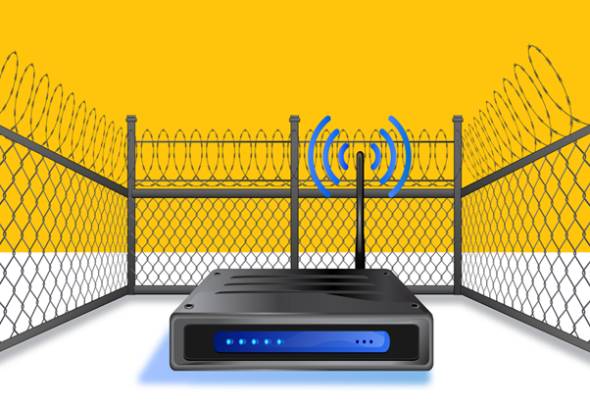Home Safety like No Other
Technological advancement has revolutionized home safety for the better. Every home security device and tool today is smart, from the locks, alarms, lighting systems, and doorbells, to the surveillance cameras. Artificial Intelligence (AI) is taking the effectiveness of these home security devices a notch higher by enabling them to learn and react to potential security breaches.
AI is now deeply entrenched in the realm of security, which has birthed a new era of home security like no other.
AI Home Security Capabilities: Continuous Learning and Monitoring
Artificial Intelligence (AI) is the ability of machines (computers) to learn, reason, and perform tasks that were traditionally reserved for human intelligence. There’s a branch of AI known as Machine Learning. Through Machine Learning, AI can learn from past experiences, develop knowledge, keep a memory, and then use past memories and experiences to detect and report potential security threats. Modern surveillance systems operate with AI for continuous learning and security monitoring.
Such a surveillance system will, among other things:
- Offer a 24/7 monitoring functionality. The system shares real-time data and alerts you in case of an abnormal security situation.
- Differentiate between human beings, objects such as furniture, shadows, and animals in the home. This filters out false alarms.
- Detect suspected home breakers and trespassers and ask them to leave before alerting you or your security personnel. That lowers the frequency of false positives.
- Use the knowledge it gathers over time to iteratively improve its capabilities. It understands your home’s unique needs, so you don’t need to hire more security staff to keep an eye on multiple-camera feeds.
- Make it easier for your security personnel to extract data and pick out specific events in a pile of video recordings. Searching for an event in long video footage using manual processes can be extremely tedious and time-consuming.
What AI Devices Do You Need To Deploy IN Home Security?
1. AI-powered custom home security cameras
AI-powered custom home security cameras come with face recognition features, which means they can recognize house occupants and frequent guests. You can even set it to notify you with a special voice assistant or an alert to a mobile app whenever a regular guest arrives at your door, even before they knock. It’s in the same way that the cameras recognize frequent guests that it detects and notifies you/police of unknown or suspicious people.
AI-powered security cameras will help you find lost objects through AI’s ability to recognize and label objects in the house. The cameras can also read license plates and create a database of the cars allowed to park in your parking lot. Any car that’s not on the database is flagged off immediately.
2. AI-powered video monitoring systems
AI-based video monitoring systems eliminate the need for security personnel to constantly stare at screens. The system will analyze video footage from multiple cameras and detect accidents (such as slip-and-fall or fire), emotional or violent incidences, or any other abnormal behavior/incident in the home. They come with emotions and behavior recognition features, enabling them to detect an intruder’s emotional state and alert house owners of imminent danger.
The system can also detect visual patterns of domestic violence- e.g. clenched fists, flying objects, crying, unexpected fall to the floor, rapid arms movement, or loud conversations with abnormal intonations. Abnormal behavior recognition is also perfect for detecting and alerting first responders of heart attacks, panic attacks, or epileptic attack incidents in the home.
3. Ambient sensors
You don’t need to build walk-through stations at the gate to keep the home safe from chemical warfare. Ambient sensing detects the presence of hazardous materials in the home. The technology will alert you of explosives, toxic industrial chemicals, hydrocarbons (e.g., diesel, gasoline, and toluene), or any other chemical warfare agents. The sensors provide continuous sensing over wide areas. You can place them anywhere on the property, including the main security breach culprits- the backyard and bathrooms. That’s unlike walk-through stations that are mostly limited to the gate and main entryways.
4. Geofencing
Geofencing technology uses artificial intelligence to define a region that’s out of bounds to unknown people. It then creates a virtual fence around that region for added protection. It can tell when a house occupant enters or exits the perimeter, so it turns the lights or thermostat on/off. If a thief steals a smart device within the perimeter, the system can alert security authorities of what has been stolen.
Types of AI: Strong, Weak, and Super AI
Artificial Intelligence has three stages.
- Weak AI (Narrow AI): These AI tools perform very specialized, basic human intelligence tasks. All the AI tools known to man today belong in this category. Some of the common examples of weak AI are email spam filters, Google maps, Siri and other smart assistants, chatbots, phone autocorrects, and self-driving cars. Using the right conversational AI tool can help automate these tasks, making them more efficient and accurate. When it comes to out home safety and comfort these tools can be of great help. They can provide us with timely reminders, weather alerts and much more.
- Strong AI or artificial general intelligence (AGI): These AI tools should mimic general human intelligence. They should learn new skills, be knowledgeable, and plan ahead just like humans do. Strong AI doesn’t exist as of now- it’s hypothetical.
- Artificial Super Intelligence (ASI): These AI tools will surpass human intelligence. ASI is also hypothetical as of today. Sci-fi movies attempt to predict what ASI will be like once it’s realized and actualized, and their predictions are quite scary.
Types of AI: Functionality
Based on their functionalities, AI tools fall into these 4 categories:
- Reactive Machine AI: These tools perform pre-defined tasks. An example of reactive machine AI is the chess program known as Garry Kasparov.
- Limited Memory AI: This AI can store past experiences, study past data from its memory, and evaluate future actions. Examples of limited memory AI are chatbots and self-driving cars.
- Theory of Mind AI: This AI is hypothetical. Once actualized, it’s expected to mimic the emotional intelligence of human beings and to comprehend human beliefs and thoughts.
- Self-Aware AI: These AI tools are also hypothetical. Tech futurists predict that self-aware AI will have its own consciousness and self-awareness. The AI will be super intelligent.
Conclusion
Technology in the home will continue to expand home security will keep getting tighter and more efficient as more advanced types of AI come into being. The future of AI is, however, hypothetical and, to some extent, far-fetched. There is a long way to get to strong AI and super-intelligent AI. If the future of AI scares you, now is a little too soon to start worrying. Embrace the present with a little more optimism and enjoy the exciting possibilities that weak AI has brought about.









